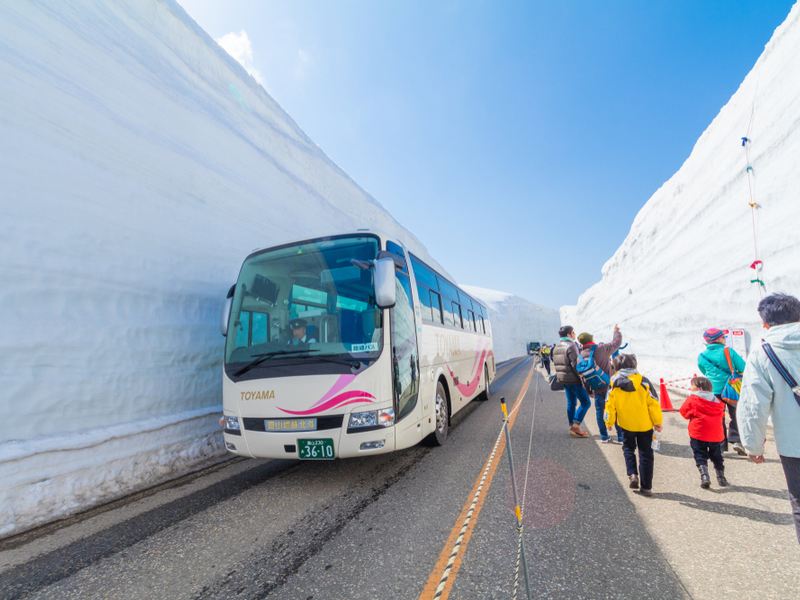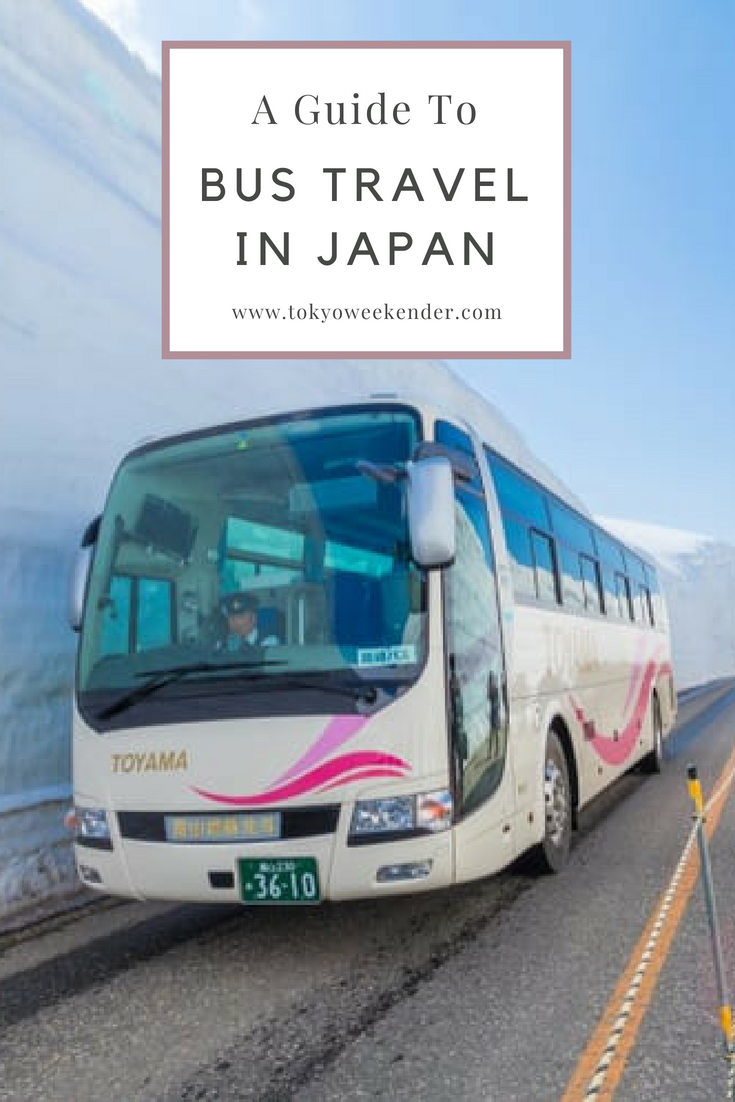Traveling by Bus in Japan
While Japan is most famous for its high speed and convenient train services, there are a lot of areas — especially in the countryside — that are only accessible by bus. Highway buses are also a cheaper alternative to traveling long distances and offer a different view of the country. Here is our guide to traveling by bus in Japan:
Tickets and Fares for Buses in Japan
Different bus companies, regions, and cities use different ticketing methods, which can make bus travel slightly complicated. For example, Kyoto has scrapped its “get on at the back and pay when you get off” system because it proved too complicated for newcomers. Read on for more information on the various fare systems and boarding methods you’ll encounter on your travels in Japan.
Different Fare Systems and Boarding Methods for Buses in Japan
Paying a Flat Fare
A popular system in metropolitan areas, you only have to pay a basic fee for the whole bus ride, no matter where you get on and off. Keep in mind that some bus companies travel outside of the basic flat fare zones and you may need to pay a combination of a flat fee rate and a distance-based rate, or two flat fares.
Paying According to Distance
This system is most often used in the countryside. When you board, take a ticket from the ticket box at the doorway. It will have a number according to the zone/area you boarded from. In the front of the bus, a screen will display the different zones as well as the prices. The fare will gradually increase as your journey continues. When paying, simply refer to your ticket number and pay the amount listed underneath the same number displayed on the screen.
Boarding from the Back
Some cities and local areas only allow boarding from the back and exiting from the front. In this case, you will be required to pick up a ticket upon boarding or swipe your IC card at the door if it is a bus service that charges according to distance. Pay for the distance you travel at the front of the bus before exiting. If it is a flat fee service, then simply pay/swipe the standard fare as you exit the bus.
Boarding from the Front
Popular in the Tokyo metropolitan area, Yokohama and Kawasaki, boarding buses from the front generally require payment upfront when you board, whether it is a flat fee or distance-based fare.
Paying Your Fare in Cash
You are required to pay your fare with exact change. Place the coins inside the clear plastic box next to the driver. If you don’t have change, use the change machine which is located to the side of the pay slot box. Use the change received here to pay your fare.
Bonus tip: Check in advance whether you have the correct change. If not, use the change machine before the bus stops at your stop to prevent congestion when disembarking.
Paying Your Fare with an IC Card
IC cards are convenient for city travel as you can use them on buses, trains, and even to purchase drinks at convenience stores and at select vending machines. They also offer a nominal discount when used. Depending on the bus system — whether it uses a flat fare or distance-based fare — you’ll tap the IC card upon boarding, when disembarking, or both. Since different regions and bus companies use their own systems, check or ask in advance which system is in use where you plan on traveling to.
Highway Buses and Overnight Buses in Japan
Travel by bus is much slower than by train — especially when compared with the Shinkansen — because of speed limits and frequent bathroom breaks along the way. However, long-distance buses are much cheaper. They can get you across half the country for a very reasonable price if you’re ready to deal with the discomfort of traveling all night or all day on a bus. Several highway bus companies now cater to international travelers including, but not limited to Willer Travel and Keio Dentetsu Bus. Japan Bus Online and Japan Expressway Net offer lists of different companies, allowing users to compare.
If you’re traveling for more than just a return or one-way trip, it may be worth looking into multiple-ticket discounts or one of the many bus passes on offer (see below).
Bus Passes in Japan
Unlike the rail passes and highway passes, bus passes in Japan are far more foreign resident-friendly.
Japan Bus Pass
Private highway bus companies like Willer Express offer nationwide bus passes for international travelers, whether they reside overseas or in Japan. The Japan Bus Pass can be used on non-consecutive days within a two-month period. Currently, three, five, and seven-day passes are available. It is valid in all regions except Hokkaido and Okinawa. For more info go to Japan Bus Pass.
Shoryudo Bus Pass
This pass is exclusively for foreign travelers to Japan and allows easy access to the Chubu region in central Japan. There are two different 3-day passes and one 5-day pass, each offering discounts and popular destinations along the route. More info at Shoryudo Bus Pass.
Sun Q Bus Pass
Kyushu-based Sun Q Bus Pass gives passengers unlimited use of most buses — both local and highway — on the island of Kyushu for three to four consecutive days. There are three versions: the Northern Kyushu Pass, the Southern Kyushu Pass, and the All Kyushu Pass. More information at Sun Q Bus Pass.
Tohoku Highway Bus Ticket
The Tohoku Highway Bus Ticket allows unlimited travel on designated highway buses across Tohoku’s six prefectures. Some routes require reservation in advance, while others do not. The tickets allow for either four or seven days of consecutive travel in the region. More info at Tohoku Highway Bus Ticket.










